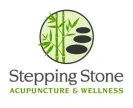![]()
This post is copied from our older, original blog. Original post date 03/19/2012.
By Marcie Bower, Lic.Ac.
Many of our patients come to us for some sort of pain-related problems – back pain (http://archinte.ama-assn.org/cgi/content/abstract/167/17/1892), neck pain (http://online.liebertpub.com/doi/abs/10.1089/acm.2008.0135?url_ver=Z39.88-2003&rfr_id=ori:rid:crossref.org&rfr_dat=cr_pub%3Dpubmed), elbow pain (http://rheumatology.oxfordjournals.org/content/33/12/1162.short), menstrual cramps (http://www.sciencedirect.com/science/article/pii/S0002937807009209), arthritis pain (http://www.annals.org/content/145/1/12.short) headaches (http://www.thecochranelibrary.com/SpringboardWebApp/userfiles/ccoch/file/Acupuncture_ancient_traditions/CD007587.pdf) and migraines (http://cep.sagepub.com/content/31/15/1510.short). And while acupuncture can be a very effective treatment for these pain conditions, we often see even better results with the addition of Chinese Herbal Medicine into the course of treatment.
Most patients and even some practitioners tend to think of Chinese Herbal Medicine for treatment of internal disorders, such as chronic digestive issues, infertility, and respiratory issues. While it is true that CHM is an integral part of effective Traditional Chinese Medicine treatment for such disorders, CHM can play a vital role in treatment of pain, as well.
CHM works on the same principles as acupuncture. From a Traditional Chinese Medicine perspective, pain is caused by stagnation in the body. A fundamental force in our bodies is Qi, or energy. Qi likes to move. When we are healthy and pain-free, our qi is circulating properly. However, when qi becomes stuck, pain ensues. The intensity of the pain is related to how severe the stagnation is. Thus, when we are using acupuncture to treat pain, we are not only thinking about increasing blood flow to the tissues and relaxing muscles to decrease pain, but we are also thinking about moving the qi and releasing the stagnation in the body’s energy systems.
CHM is a wonderful modality to get the body’s energy moving. Herbs can be taken internally – either as pills, powders, or a tea – to move the body’s energy and relieve pain. Certain herbs have affinities for certain areas of the body. For example, we include Chuan Xiong (Lovage Root) in formulas for headaches because it has the property of releasing stuck energy and relieving pain in the head. We use Chuan Niu Xi (Cyathula Root) in formulas for knee pain, as it has an affinity for moving stuck energy in the lower limbs. For chronic pain, the herbs not only address the pain but also can treat the underlying imbalance that gave rise to the pain, which is very important in prevention of future injuries or illness.
Chinese herbs can also be used in external applications directly on the site of pain. We frequently use topical liniments, salves, tinctures, compresses, and patches with patients coming in for treatment of musculoskeletal ailments or menstrual cramps. The topical application of the herbs work both on increasing flow of blood and energy through the painful or injured area, and work directly on decreasing the sensation of pain.
Certain types of pain are thought to be “hot-type” of pain in Traditional Chinese Medicine – these sites of pain are often red, hot to the touch, and swollen. The pain is often made better by application of ice or a cold pack. We use topical Chinese herbs that have a cooling property to lessen the hot pain sensations. These topical applications will often make the area feel cool when applied. Other types of pain are thought to be “cold-type” pain – these pains get better when heat is applied. Cold types of pain also tend to get worse in cold weather and may be associated with sharp stabbing pains. Menstrual pains, for many women, fall into the category of a cold-type pain. In this case, we use topical applications of Chinese Herbs that contain warm herbal ingredients to decrease pain and warm up the area.
So next time you are in pain, think not only of acupuncture as a source of relief, but also of Chinese Herbal Medicine. If you have a tendency to certain types of pain (ie, tension headaches, a chronically painful hip, etc.), you can keep herbal formulas and patches on hand at home to use when the pain flares up. If you start treating the pain right away, the body doesn’t have a chance to learn that pattern of being, and you’ll find yourself pain-free much more quickly than if you waited until the pain was really bad.

